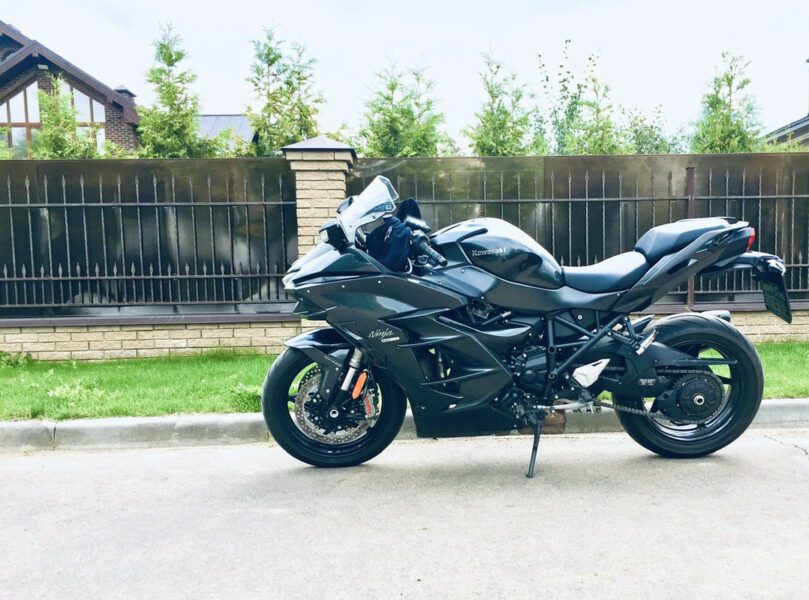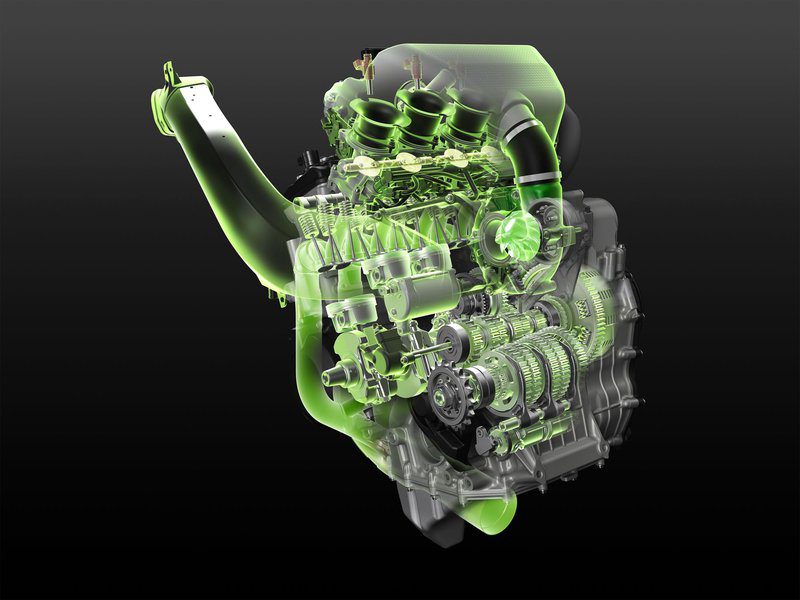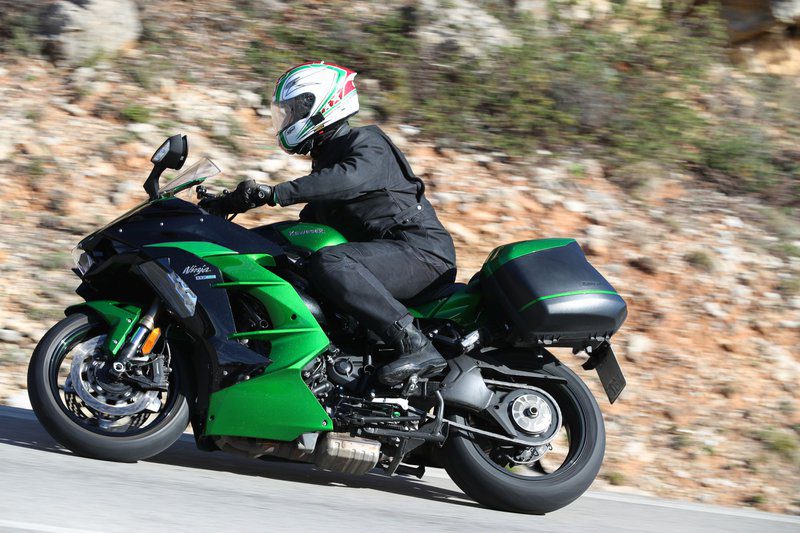
We drove: Kawasaki Ninja H2 SX
Obviously, for the Kawasaki H2, and even more so for the special R version, they are and will be rarely seen on the roads. Then Kawasaki decided they needed something that would be on the road, be it a highway or a mountain pass, a Porsche sedan. Let it be a sports traveler!
The world presentation in Lisbon repeatedly emphasized that the H2 SX is not just an H2 with an extra seat and a taller windshield, but a completely new motorcycle with a second-generation turbocharged engine - they say that it is a “supercharged balanced engine”. engine'. With the H2, they wanted to break the sound barrier, and when developing the H2 SX, they were looking for a balance between performance and usability - on the road without speed limits and on the road with a passenger, with side cases - and even economy: a promised fuel consumption of 5,7 liters per 100 kilometers comparable to a Z1000SX or Versysa 1000. In practice, it leaned to seven liters on the road (which was really quite decent considering the pace), and on the race track ... Hmm, if I'm not mistaken, at full throttle, the current consumption display shows numbers 4 and 0. No commas. 40 then.

Are you already afraid of how 200 pumped stallions behave? While what is written does not guarantee that this motorcycle is intended for everyone who has passed the Category A exam, there are two facts on the part of your insurance company. Firstly, unlike the Japanese "turbos" of the 80s (they were offered by all four major Japanese manufacturers), instead of exhaust gases, the charger is driven by a mechanical connection, that is, a compressor, and secondly, today the power is controlled electronically : traction control, a system for a safe and uncompromising start, and when things don't go according to plan, an anti-lock braking system. There is also a quick shift system, cruise control, a choice of three different engine programs, an adjustable engine brake, heated levers, a multifunction display and much more. In fact, among the increasingly common “techs” today, only the electronically adjustable suspension (which was installed in the ZX-10R this year) and the electrically adjustable windshield are missing.
Very quickly I got used to the dashboard, where there are only warning lights, let's say they write, 13, and there is also a liquid crystal display that can change the way it is displayed (sports, tourist, black and white or vice versa.) and switches - on the left side steering them, if I didn't miss, as many as 12. But if you knew how to control a Game Boy, you would too. The only annoying thing is that the cruise control buttons are too far to the right; To reach them with your thumb, you need to partially lower the rudder.

H2 SX - a comfortable engine on the road? Depends on where your absolute comfort zero is. Having got used to the position when the body hangs a little on the hands, you probably will not complain, and after a good 100 kilometers to the point of the first photo shoot, I already felt both the arms and the buttocks. Think about the kind of roads you like to drive on; If it's roads with long, fast corners and quality ground that you can move on at enough speed to give your body some rest from the wind, the H2 SX is for you. If your current bike is a touring enduro and you like to ride Petrova Brdo, then a little less. By comparison, the seat is more upright than on the H2, and also more upright than on the ZZR 1400. The bottom of the body is well protected from the wind, the top reaches to the height of the windshield, and most importantly. it is commendable that there are no disturbing turbulences around the helmet.
We didn't go to the Autodromo do Estoril due to a series of fast laps. The runway launch was intended solely to test flight performance, brakes, and handling between the cones; However, between these sections, we were "free" on the track and were able to check how much of the genetics of a real ninja is hidden in the SX. The "launch control" test is what I would pay double for at Gardaland. But you know what's most interesting? This acceleration from 0 to 262 or 266 kilometers per hour (we only had two attempts) electronically seems less stressful than I expected. It just seems to you that the brain is somewhere behind at the beginning of the start-finish plane. Otherwise, from the test on the race track, I would highlight two more conclusions: after I drove in third gear in the last right turn, the speed at the finish line was 280 kilometers per hour. When I went through the same corner in sixth gear, that is, at much lower rpm, the speed before braking was still 268 kilometers per hour! Hopefully this is telling enough about how a damn well-boosted inline-four pulls even from the low rev range. And one more thing: when I chose the program with an average engine power level (medium), the trip did not even slow down, but “calmed down”; as if, in addition to throttle response, the suspension would also change (but it didn't). So, if you are not in a hurry on the road, the medium program is a more convenient choice in favor of a more comfortable ride.

Instead of a conclusion, well-intentioned advice: if your loved one is one of those who bought and sold bitcoins on time and now wants to fulfill his dream and afford a motorcycle - but since money is not an issue, he wants to buy H2 right now ... Swallow saliva, stand up kneel down and put a wedding ring on him. Or at least write a will. This is an engine for the experienced!